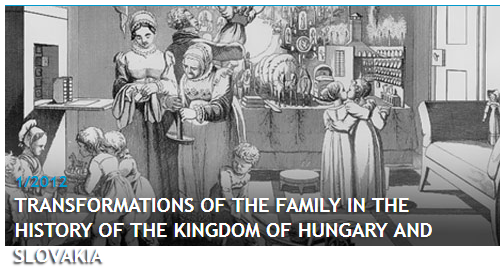Rodinné pomery v Uhorsku na konci stredoveku
Family Conditions in the Kingdom of Hungary at the End of the Middle-Ages
Author(s): Enikő CsukovitsSubject(s): Middle Ages, Family and social welfare, Demography and human biology, 16th Century
Published by: SAV - Slovenská akadémia vied - Historický ústav SAV
Keywords: demography; family structure; household structures; number of children; 16th century;
Summary/Abstract: We have only very few sources from the medieval period which can be used for research and reconstruction of families. These are mostly tax registers which don't allow us to make exhaustive demographic analyses. The author uses published tax registers from Košice, Keresztúr, Alsónyék, Sziget and Bardejov to compare demographic situation in those localities. She analyzes differences and similarities and underlines problematic aspects of coefficients used for calculation. Using some less traditional source – parish register of the Fraternity of the Holy Ghost in Rome – she adds some other data to the mosaic of late medieval demographic picture. Summarizing those results she makes a conclusion that family of 3-5 members and therefore 1-3 children was typical for the late Middle Ages. There was a large disproportion between the number of boys and girls. The number of children in towns was lower then in villages, multigenerational households or households with multiple families were rare.
Journal: Forum Historiae. Časopis a portál pre históriu a príbuzné spoločenské vedy
- Issue Year: 6/2012
- Issue No: 1
- Page Range: 21-34
- Page Count: 14
- Language: Slovak

